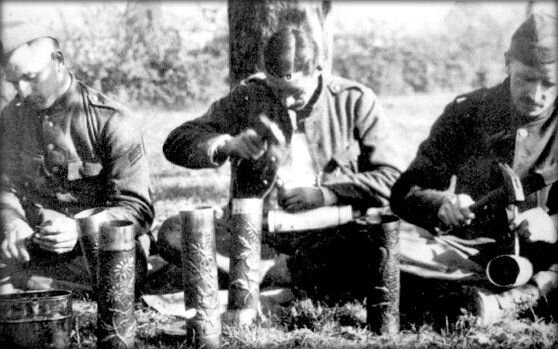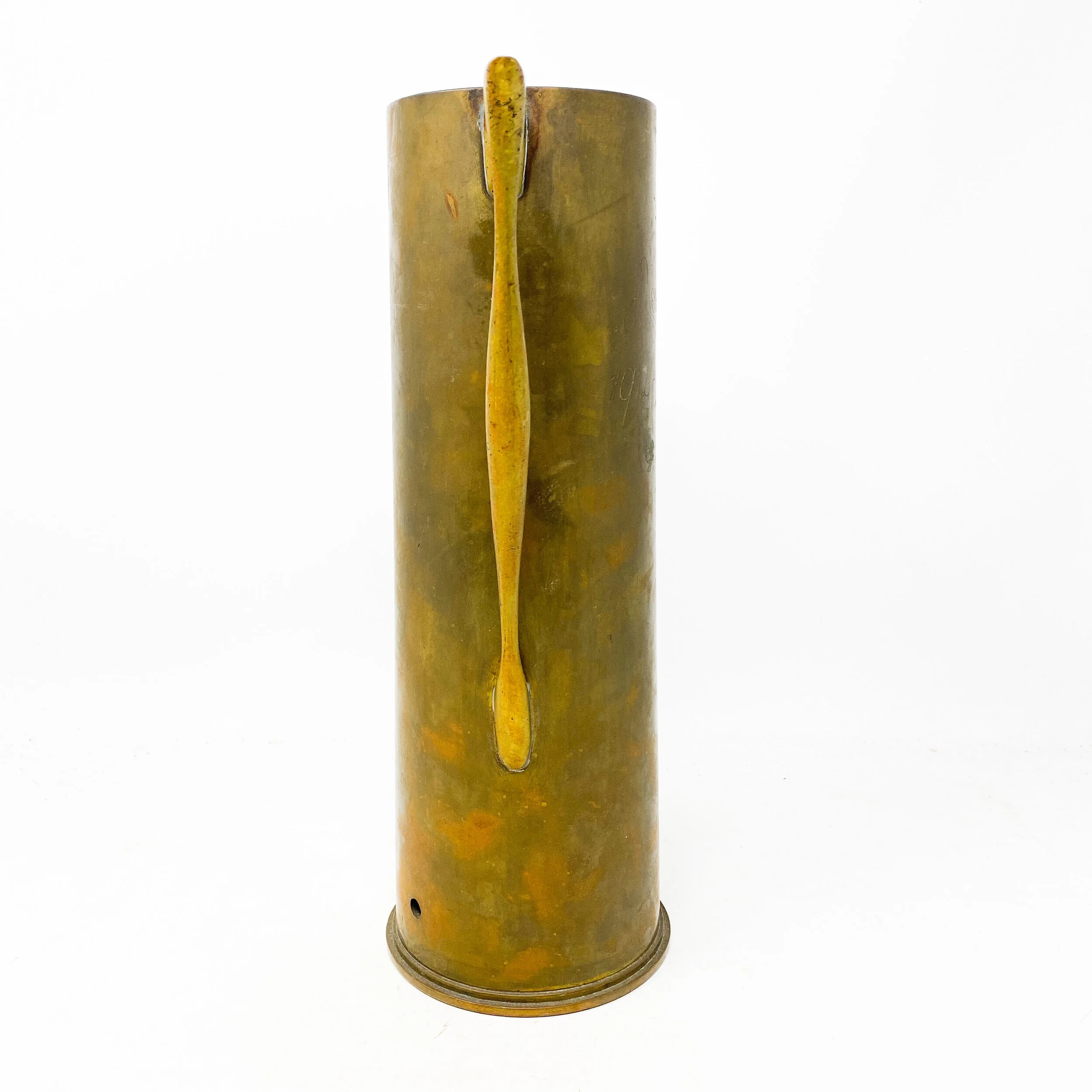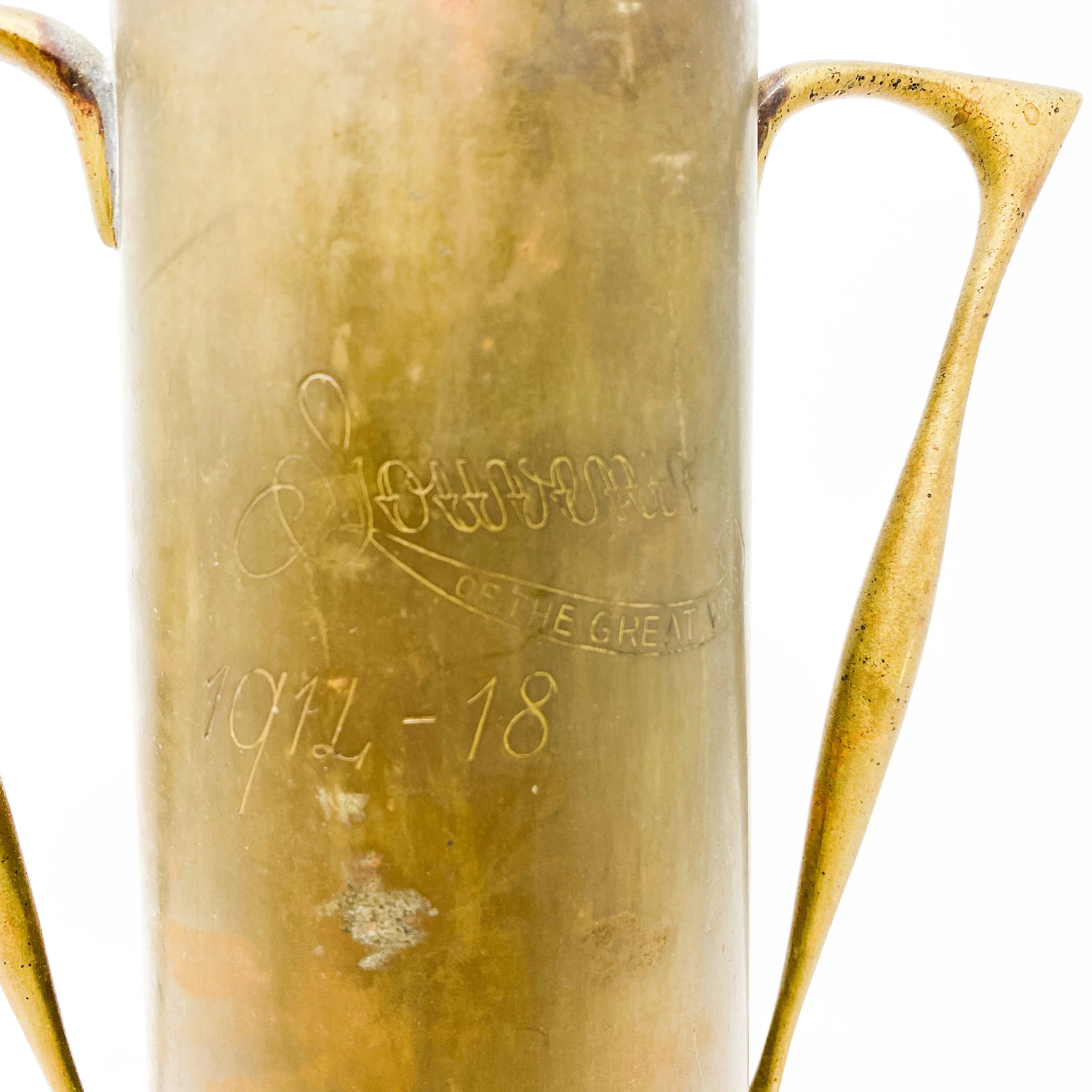'Souvenir of the Great War' Trench Art British 18 Pounder Artillery Shell Casing







'Souvenir of the Great War' Trench Art British 18 Pounder Artillery Shell Casing
Measures: 13 inches
Inscriptions: ‘'Souvenir of the Great War’
History of Trench Art:
During leisure hours at the front, skilled soldiers created trench art from the remnants of war such as discarded bullets and artillery shell casings. Many of these remnant of war were done with their own equipment and leftover items, but also by items captured and left by enemy soldiers. Trench art objects are holders of soldiers’ memories and reminders of the conflict they faced. Made out of recycled war refuse such as shell casings, spent bullets or whatever came to hand, they open a window to the past. They tell us things like where soldiers went and what their surroundings were like. They also give hints about soldiers’ thoughts and actions. Something as simple and functional as a matchbox cover can provide a map of a soldier’s movements while other, more decorative examples, show a desire to find and create beauty, to camouflage war in art. Trench art can be made of any number of things. Many objects were made out of the scraps created by war. This included ammunition shell cases, bullet casings, shrapnel, and pieces of destroyed buildings or downed planes. These materials would all have been readily available in the war zones to soldiers, their prisoners of war and to civilians still in the area.
18 Pounder Cannon:
The Ordnance QF 18 pounder, or simply 18-pounder Gun, was the standard British Empire field gun of the First World War-era. It formed the backbone of the Royal Field Artillery during the war, and was produced in large numbers. The 18-pounder shrapnel shell contained 374 small spherical bullets. A time fuze was set to initiate the shell in the air in front of the target. This blew off the shell nose and fired the bullets forward in a cone like a shotgun : they were effective up to 300 yards from the burst. For maximum effect from the cone of bullets the angle of descent of the shell had to be flat and not plunging. At a theoretical maximum 20 rounds per minute, it could deliver 7,480 bullets per minute at a far greater range than machine-guns. The gunners and officers of Regular Army field artillery batteries were expert at closely supporting the "fire and movement" tactics of the infantry with accurate shrapnel fire. Field artillery (both 18-pounder and 4.5 inch howitzer) was used successfully during the pre-Zero fire in the Battle of the Somme in late June-early July 1916, when the British heavy artillery damaged German defensive works and forced troops into the open to rebuild them they were successfully fired on with shrapnel